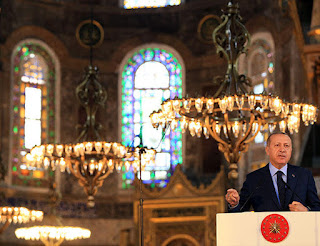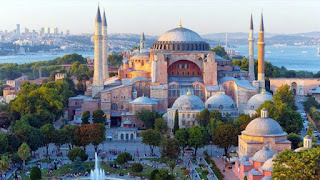The political system of the United States is a Federal Constitutional Republic with a Presidential Regime.
A federal system is made up of a central power and associated states. That is, in the case of the United States, the national central power and the 50 states that form the country.
The central power is in charge of guaranteeing political and economic unity and foreign and defense policy. However, most of the political powers are in the hands of the states.
The United States of America is made up of 50 states:
- Alabama
- Alaska
- Arkansas
- California
- North Carolina
- South Carolina
- Colorado
- Connecticut
- North Dakota
- South Dakota
- Delaware
- Florida
- Georgia
- Hawaii
- Idaho
- Illinois
- Indiana
- Iowa
- Kansas
- Kentucky
- Luisiana
- Maine
- Maryland
- Massachusetts
- Michigan
- Minnesota
- Misisipi
- Misuri
- Montana
- Nebraska
- Nevada
- New Jersey
- New York
- New Hampshire
- New Mexico
- Ohio
- Oklahoma
- Oregon
- Pennsylvania
- Rhode Island
- Tennessee
- Texas
- Utah
- Vermont
- Virginia
- West Virginia
- Washington
- Wisconsin
- Wyoming
- Arizona
The presidential regime is the opposite to parliamentarism. Executive power is held by the president who is both head of government and head of state.
The requirements to be president of the United States are: you must be over 35 years old, born in the United States and have lived in the country for at least 14 years. Once elected president, he/she can remain in power for a maximum of two 4-year terms.
The functions of the president are:
- Serve as Head of Government, Head of State and Commander-in-Chief of the Armed Forces.
- Nominate the magistrates of the Supreme Court and the judges of lower federal courts. Although it must be ratified by the Senate.
- [Now we can understand better the controversy over the election of Trump of Amy Coney Barrett to the Supreme Court]
- Appoint the cabinet of secretaries and heads of agency. Although he/she needs confirmation from the Senate.
- Designate the heads of independent federal commissions such as the U.S. Securities and Exchange Commission, ambassadors ...
- He/ She also has the power to sign and veto bills approved by Congress. Although they can override a president's veto with a 2/3 vote of Congress and the Senate.
- Issue executive orders
- Negotiate international treaties and negotiate with the North American indigenous tribes. Although it needs ratification by 2/3 of the Senate.
- He/ She has the power to grant pardons and temporary suspensions of execution, except for those convicted of impeachment.
The legislature power is independent of the executive power. In the United States, there is no link between the executive power and the majority political party in Congress. In fact, members of the presidential cabinet cannot be members of Congress.
The executive power is held by the president, the vice president, the president's cabinet made up of 15 secretaries (equivalent to European ministers), the president's office (administrative organizations) and the independent government agencies (such as FBI, CIA ...).
The legislature power is held by House of Representatives
and the Senate, which together make up the Congress of the United States.
The House of Representatives is made up of 435 representatives elected
proportionally to the population of each state and non-voting representation
from the District of Columbia, American Samoa, Guam, Puerto Rico and the US
Virgin Islands.
The chamber has the power to impeach the President and the judges of the Supreme
Court, the ability to elect the President in the event of a tie and the
authority to approve foreign trade treaties.
The Senate is made up of 100 senators, 2 from each state. The vice president is
the president of the Senate.
The United States Congress has the functions of enacting laws, declaring war and substantial investigative powers.
The judiciary power is held by the Supreme Court, the courts of appeal, the federal district courts, and special courts such as the Court of Accounts. Federal judges are named by the President with the approval of the Senate, for life.
ELECTORAL SYSTEM
On November 3, 2020, Americans were called to vote. Americans are summoned every 4 years since 1951, when the 22nd amendment was approved.
Although the election of the president is the most popular on the media, members of the House of Representatives and a third of the Senate are also elected. Also more than half of the state governors and other positions at state and local levels.
The electoral process:
- Citizens vote on the first Tuesday after the first Monday of November in leap years and those divisible by 100.
- Electors formally cast their votes on the first Monday after the second Wednesday in December.
- The Congress receives the electoral votes of the states, counts and certifies them, on January 6.
- Presidential Inauguration of the new president: January 20, 2021.
Since 1852, the elected presidents of the United States have belonged to the Democratic or Republican Party.
The Democratic Party is the considered progressive party of the United States.
Its symbol is a donkey because Andrew Jackson was very stubborn and his opponents called him Andrew Jack-ass. Barack Obama and future President Joe Biden belong to this Party.
Historically, it has defended the civil rights of citizens:
- Civil rights against discrimination (1964)
- Patient Protection and Affordable Care Act (Obama Mandate)
- Reformed the Constitution so that women had the right to vote
- Social Security Law (1930) (assistance to retirees, unemployed, widows and orphans)
- Fair Wage Law (2009)
The Republican Party is considered the Conservative Party. Its symbol is an elephant as the Party was represented in a caricature when it was defeated in the elections of 1874. It was created in order to abolish slavery (Abraham Lincoln). Donald Trump belongs to this Party. It stands up for conservatism, the free market and Christianity.
Although it may not seem like it, there are other political parties in the United States: such as the Green Party, the Libertarian Party, the Socialist Party, and the Communist Party.
Party presidential primaries elections
During the first 6 months of the electoral year the presidential primaries are held by which the candidate of each Party is chosen.
Those over the age of 18 can register to vote and, by registering, have the possibility of joining a party.
There are 2 systems in primary elections:
- Caucus system. Used in states like Iowa and Nevada.
Through a party assembly with citizens registered and affiliated with the party, by show of hands or by casting the ballot, they elect their candidate. - Primary System.
Which can be in two different ways:
- partisan (each party holds its own election): open (the citizen's affiliation does not matter, but can only vote in one) or closed (only affiliates can vote);
- non-partisan (used in states like California and Washington): candidates compete to be the nominees.
It is important to name what is known as Supertuesday, the day in which the largest number of states hold party presidential primaries elections. In 2020 it was on 3rd March.
National Party Convention
During the summer, the political parties announce who is the candidate for the presidency and who will accompany him/her as vice president.
Presidential election
On the first Tuesday after the first Monday of November, US citizens over 18 years old elect the delegates who will vote for the President through the electoral college.
The North American electoral system is indirect. Citizens do not directly elect the candidate but electors who will cast the votes on their behalf. Thus most electors are required to vote what the citizens of their state have decided.
To win the elections, the candidate must obtain an absolute majority. The total number of voters is 538, therefore, the candidate must obtain 270 votes. The eletoral college is made up of electors from different states and the District of Columbia based on population. The number of electors equals the number of deputies in the House of Representatives, plus the number of senators, plus three delegates from Washington DC. Each state has a number of delegates that represents them, which coincides with the number of congressmen.
California is the state with the largest number of electors (55).
It is important to consider the so-called swing states where the vote is usually at variance. Those states are usually Ohio, Florida, Wisconsin, Michigan, Arizona, Pennsylvania and North Carolina.
Each state has its own system for electing members of the Electoral College.
Except for Maine and Nebraska, the candidate who wins the majority of popular (citizen) votes wins all electoral (delegates of the Electoral College) votes. This system is known as the winner takes it all. In the case of Nebraska, 5 electoral votes are distributed: the winning candidate in the state takes 2, while the other 3 correspond to three districts that each elect a winner. Maine has 4 electors of which 2 vote for the state winner and the other 2 are divided into districts.
Only 10 electors have been disloyal to the popular vote in the history of the United States.
The Electoral College never meets as a group. After the popular elections, the electors meet in the state capitals and formally cast their vote, which is sent to Congress for ratification.
In the event of a tie, Congress will decide the president.
It may be the case of a candidate who loses the electoral vote, but would have won by the popular vote.
Sources:
https://www.eleconomista.es/especiales/elecciones-estados-unidos/sistema-politico.php

































